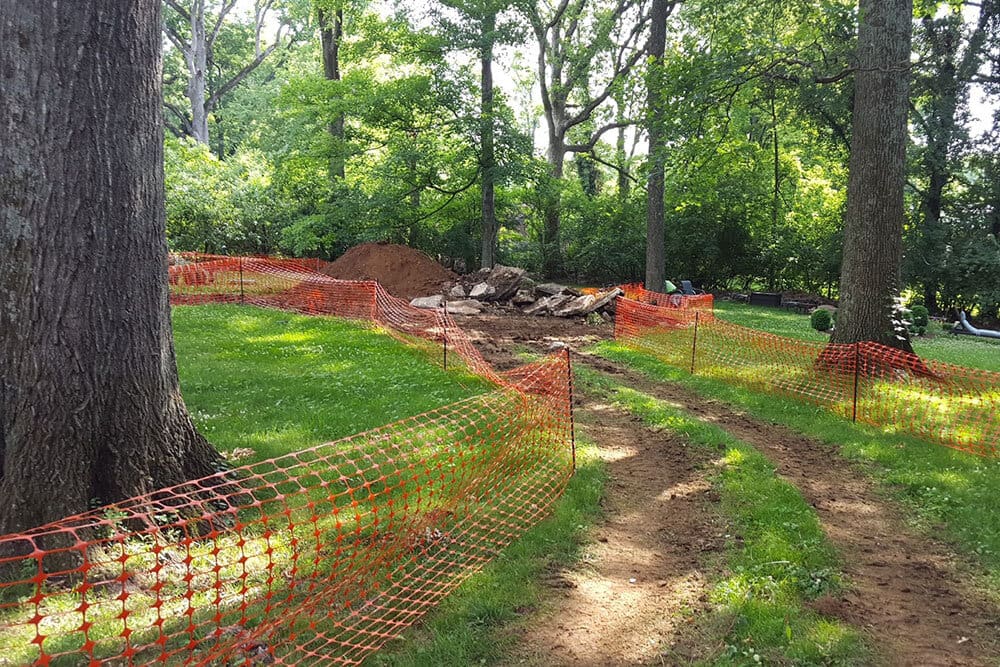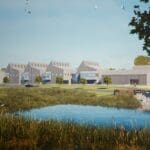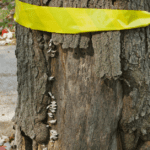
Mature trees are incredibly valuable to properties as they provide shade, capture stormwater and absorb air pollution. While you can plant younger trees to replace mature trees that were removed during a landscape construction project, there are methods to preserve your client’s established trees.
Obviously, it’s easier to work with a blank slate, but client requests, historical significance, and other factors can all require planning an installation process that considers mature trees.
Failing to protect mature trees during the construction process can result in soil compaction and physical damage to roots, limbs and trunks. This can cause the tree to decline, especially as older trees are less able to recover from construction stressors.
Identify Trees to Preserve
During the design process, conduct a tree inventory and discuss with your client which trees can be preserved and which should be removed. Consider the location, current size, future size, species, health, cost of preservation and cost of removal for each tree.
If you don’t have an arborist on staff, hiring one to assess all the trees on the property can help determine which trees are worth preserving and which are in a poor location or unlikely to survive. Keep in mind that a tree can be very healthy, but have poor structure because of decay or be very unhealthy but have good structure because of a lack of decay.
When observing the structural safety of trees, review the condition of the root system, trunk wounds, amount of deadwood in the canopy, signs the tree has dropped large branches in the past and if there are abnormal branching habits or severe leans.
Certain species are more sensitive to root disturbance, including oak, beech, white pine, hemlock, black walnut and sugar maple. Others are more tolerant, such as honey locust, river birch, red maple, sycamore and white spruce.
Local regulations dictating the type and size of trees that must be preserved may also exist depending on your area. Think through how the removal of one tree may impact others on the property and strive to retain an assortment of species to safeguard against losing a collection of trees to disease or insects.
If you have to preserve historic trees, taking cuttings prior to construction can also serve as a worst-case scenario solution in case the tree declines after construction.
Once you have come to a consensus with the involved parties about which trees should be preserved and which should be removed, outline the protective measures that will be taken. In some cases, curving a path or changing the angle of a building during the design phase can help preserve the root space of a beloved tree.
Prior to construction, conduct an on-site walkthrough with those who will be working on the property. Numbering and field tags can help your team avoid cutting down the wrong trees.
Preservation Methods
No matter how resilient a tree is, construction projects are stressful for them so make sure the selected trees are as healthy as possible by watering regularly leading up to the installation work and prune any dead, diseased or hazardous branches.
Damage typically occurs through injuries caused by equipment, compaction and grade changes, and excavations.
To prevent trees from being scraped, bumped or having broken branches, erect physical barriers. The size of the barricaded area will vary on the tree species and size. For recently planted trees one to four years old, barricades to the dripline should be adequate. Trees older than four years benefit from barricades extending beyond the dripline. For each inch of trunk diameter, extend the protection area an additional foot.
Adding wood chips over tree roots outside the protection areas can also help. Increase the depth of the wood chips if equipment will be moving over these areas. If you must work within the tree’s dripline, building plywood boardwalks can help mitigate soil compaction.
Stress to your crews the importance of these trees so they don’t wash down equipment near these trees or store building materials over the roots.
Avoid changing the grade near the tree’s dripline. Significant changes can affect the fine root system and adding soil can subject roots to improper gas exchange and essentially smother them.
If trenching is required, try to route these around trees. If it is not possible to trench around the tree’s protected root zone, tunneling under the root system can minimize root damage. Trenching with backhoes and other equipment can destroy entire root systems, while tunneling or boring under the roots has little effect.
Throughout the project, monitor the tree’s canopy for signs of dieback as this can indicate root injury. Make sure the tree is receiving adequate water and that road runoff isn’t being directed to the tree.
Post-Construction Care
Construction impacts may not be visible until months later. Monitor your client’s trees regularly for signs of deterioration like yellowing leaves, dieback, leaning, dropping of limbs or fungi growth. A slightly damaged tree will grow more slowly and be more susceptible to disease and insects.
Trees should be watered regularly to reduce water stress and mulch added to the protected root zone to maximize tree health. Keep competing vegetation away from the trees so they are not competing for nutrients and water.
If the tree is showing signs of soil compaction impacting the tree, like leaf wilt, early fall coloring, or top dieback, aeration can help. Aeration can be done shallowly with standard core aerators, or deeper by vertical mulching with augers.
It could be three to seven years before symptoms of decline are noticeable, so inspect them regularly to determine if pruning, fertilization, or disease control is necessary.



